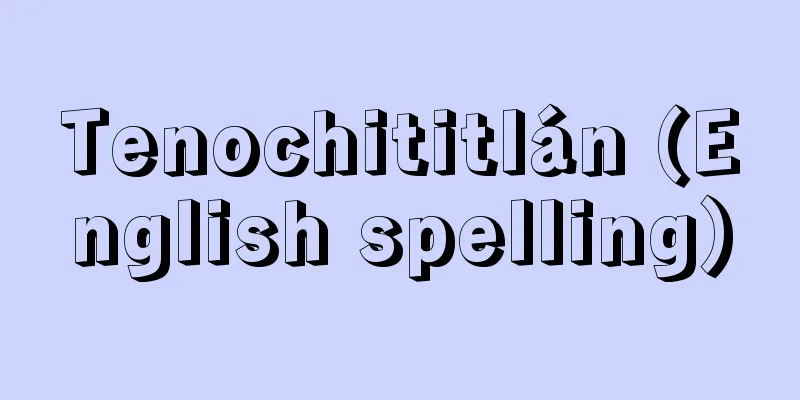Buried Cultural Property - Maizo Bunkazai

|
Buried cultural property means cultural property buried underground and remains, and is a concept that includes archaeological ruins and the artifacts buried there. In legal terms, buried cultural property sites can be considered synonymous with ruins. Currently, each prefecture publishes ruins maps under the responsibility of the board of education and strives to publicize buried cultural property sites, and the total number of sites nationwide is estimated to be about 440,000. Japan is characterized by a high density of ruins from each period over a long period from the Paleolithic period to the Middle Ages and Early Modern Periods, making it possible to systematically trace the local history of each area, and by the fact that there are more ruins in good condition than expected. It should also be noted that new ruins are continually being discovered, the number of ruins is constantly increasing, and ruins maps are being rewritten. Previously, the only known rice paddy ruins were the Toro ruins in Shizuoka Prefecture, but since 1976, Yayoi rice paddies with their own unique characteristics have been discovered one after another in various places from Fukuoka Prefecture to Aomori Prefecture, and the number of such ruins now stands at more than 20. Before the enactment of the Law for the Protection of Cultural Properties in 1950, all ruins were outside the scope of legal protection, except for a few designated as historic sites under the Law for the Protection of Historic Sites, Places of Scenic Beauty and Natural Monuments. The Law for the Protection of Cultural Properties clarified that movable cultural properties such as pottery and stone tools were included in tangible cultural properties, and immovable cultural properties such as shell mounds and ancient tombs were included in monuments, and thus were protected. These ruins and artifacts were buried together in the ground and exposed to destruction by excavation and civil engineering works, so the concept of buried cultural properties, which encompassed both, was adopted to protect them. At the time, the boom in archaeology after the Second World War caused a major problem with reckless excavation, and the original law stipulated the obligation to notify the government of "excavation of buried cultural properties" for academic purposes, and the government's right to prohibit and order the excavation to be stopped. However, even at that time, the main cause of destruction of ruins was civil engineering work, and a partial amendment in 1954 established a notification system for civil engineering work similar to that for academic excavations. At the same time, the subject of protection was changed from "buried cultural properties" to "land containing buried cultural properties," making it clear that it was the land itself that was the ruins that needed to be protected. In the 1960s, the period of rapid economic growth, the destruction of historical sites due to development became a serious social problem, and the Heijo Palace Ruins Preservation Movement in 1962 was a turning point, and cultural property preservation movements by researchers and citizens developed throughout the country. In the midst of this, the unfamiliar term "buried cultural properties" also became established among the public. The Protection Law, which is the basis for preserving historical sites, requires notification of civil engineering works, but does not have provisions for stopping or prohibiting academic excavations, and the penalties are light, with fines of less than 10,000 yen, so it has weaknesses in that it lacks regulatory power, and was initially called the "Zaruho" (a sieve law). However, with the increase in public opinion in favor of preservation and the strengthening of administrative guidance in response to this, the notification obligation regarding development of "well-known buried cultural property-containing sites" gradually came to be widely observed. Administrative guidance in response to this was generally limited to instructions to conduct preliminary surveys assuming destruction, but there were many cases in which the plans were changed and the sites were designated as historic sites and public land was made public as a result of the importance of the sites being revealed through preliminary surveys. The driving force behind the realization of this preservation pattern was the recognition of the value of the site by local residents and growing public opinion nationwide in favor of preservation. In the late 1960s, the cultural property protection movement developed significantly by combining with the residents' movement to protect the natural environment, and there were cases in various places where large ruins or ruins groups were successfully preserved as green spaces. Through these movements, buried cultural properties became widely recognized as living historical learning places for local residents, and as irreplaceable historical environments that are integrated with the natural topography and vegetation of the area. However, cases in which cultural properties were preserved by changing development plans are extremely rare, and the main aspect of the buried cultural properties problem is the progress of mass demolition of ruins preceded by emergency investigations. The number of excavation notifications associated with civil engineering works has been increasing year by year, from 143 per year in 1960 to 16,024 in 1985, approximately 30,000 in 1996, 34,785 in 2005, and 53,875 in 2015. Although the number of reports is not directly related to the number of actual investigations and destructions, it must be taken seriously as an indicator of the crisis of buried cultural properties in Japan. The total amount of emergency excavation costs was 47,216,480,000 yen in 1985, but reached a peak of 132,128,000,000 yen in 1997. It has since decreased to 76,375,000,000 yen in 2005 and 59,950,000,000 yen in 2015 (including approximately 3 billion yen in national subsidies since 1997). Since 1970, buried cultural property centers at the national, prefectural and city levels have been established one after another as public protection and excavation research organizations, and the excavation research system has been improved and strengthened, but no effective measures have been found to prevent the destruction of ruins themselves. Radical measures for the preservation of buried culture are needed, such as strengthening regulations through legal reform based on a permit system, reconsidering the system of excavation cost burden on the party who caused the excavation, and formulating a regional plan to largely preserve buried cultural properties as green spaces. [Ken Amakasu] "Guide to Buried Cultural Property Excavation Surveys" 21st Edition (2006, Geospatial Information Agency, Cultural Properties Department) [Reference items] | |Source: Shogakukan Encyclopedia Nipponica About Encyclopedia Nipponica Information | Legend |
|
埋蔵文化財とは地中に埋没して遺存する文化財の意で、考古学上の遺跡とそこに埋まっている遺物を包括した概念である。法律用語の埋蔵文化財包蔵地は遺跡と同義と考えてよい。現在各都道府県では教育委員会の責任において遺跡地図を公刊し、埋蔵文化財包蔵地の周知に努めているが、その総数は全国で約44万か所に達するとみられている。旧石器時代から中・近世までの長期間にわたって各時代の遺跡が高密度に分布し、各地の地域史を系統的に跡づけることが可能なこと、保存状態の良好な遺跡が予想以上に多いことなどは日本の特色である。また新たな遺跡の発見が続き、絶えず遺跡数が増大し遺跡地図が書き換えられていることも留意するべき点である。かつては水田遺跡といえば静岡県の登呂(とろ)遺跡だけだったのが、1976年(昭和51)以降福岡県から青森県までの各地でそれぞれ特色ある弥生(やよい)水田が次々に発見され、すでに20か所以上に達しているのは、その一例である。 1950年(昭和25)の文化財保護法制定以前には史跡名勝天然記念物保護法によって史跡に指定された少数の遺跡を除くすべての遺跡は法的な保護の対象外に置かれていた。文化財保護法は、動産的文化財である土器、石器などの遺物を有形文化財のなかに、不動産的文化財である貝塚、古墳などの遺跡を記念物のなかに位置づけて初めて保護の対象であることを明示した。これらの遺跡と遺物は一体となって土地に埋没していて、発掘や土木工事による破壊にさらされていることから、これを保護するうえで埋蔵文化財という両者を包括した概念が採用されたのである。当時は第二次世界大戦後の考古学ブームによる乱掘が大きく問題にされていた関係で、当初の保護法では、学術目的による「埋蔵物たる文化財の発掘」に対する届出義務と、それに対する政府の禁止、中止命令権が規定された。しかし当時にあっても遺跡破壊の主要な原因は土木工事にあり、1954年の一部改正で、土木工事についても学術発掘に準じた届出制が定められた。同時に保護の対象をそれまでの「埋蔵物たる文化財」から「埋蔵文化財包蔵地」と改め、守らなければならないのが遺跡である土地そのものであることが明確にされた。 高度経済成長期を迎えた1960年代になると、開発による遺跡の破壊は深刻な社会問題となり、1962年の平城宮跡保存運動を画期として研究者・市民による文化財保存運動が全国各地で発展した。埋蔵文化財という耳慣れないことばもこうしたなかで国民の間に定着していった。遺跡保存のよりどころである保護法は、土木工事に対しては届出を義務づけているが、学術発掘に対しては設けられている中止・禁止の規定がなく、罰則も1万円以下の罰金という軽さで規制力に乏しいという弱点があり、当初は笊法(ざるほう)などといわれていた。しかし保存の世論の高まりと、それにこたえる行政指導の強化が相まって「周知の埋蔵文化財包蔵地」の開発にかかわる届出義務はしだいに広く遵守されるようになった。これに対する行政指導は破壊を前提にした事前調査の指示にとどまるのが一般であったが、事前調査によって重要性が明らかになった結果、計画を変更して史跡指定、公有地化が行われた事例も少なくない。このような保存のパターンが実現するうえで、当該遺跡の価値を評価した地域住民、全国的な保存世論の高まりが大きな推進力となった。 1960年代後半には文化財保護運動は自然環境を守る住民運動と結合して大きく発展し、大きな広がりをもった遺跡や遺跡群を緑地として保存することに成功した事例も各地にみられるようになった。こうした運動を通じて埋蔵文化財が地域住民の生きた歴史学習の場であるとともに、自然地形や植生と一体となった地域の歴史的環境としてかけがえのないものであることが広く認識されるようになった。しかし開発計画を変更して保存された事例は全体のなかではきわめてまれな例であり、埋蔵文化財問題の主要な側面は、緊急調査を前置した遺跡の大量爆破の進行にあるといわざるをえない。土木工事に伴う発掘届の件数は、年々急上昇を続け、1960年には年間143件であったものが1985年には1万6024件、1996年(平成8)には約3万件、2005年には3万4785件、2015年には5万3875件に達した。届出数は実際の調査・破壊数と直結するものではないが、日本の埋蔵文化財の危機を示す指標として深刻に受け止めなければならない。また、緊急発掘調査費の総額は、1985年度は472億1648万円であったが、1997年のピーク時には1321億2800万円に達した。その後は減少し、2005年では763億7500万円、2015年には599億5000万円となった(1997年以降は国庫補助約30億円を含む)。なお、公的な保護発掘調査機関として1970年以降、国・県・市各級の埋蔵文化財センターが次々に設立され発掘調査体制は整備強化されたが、遺跡破壊自体を抑止する有効な対策はみいだされていない。許可制を柱とした法改正による規制の強化、発掘費の原因者負担制度の再検討、埋蔵文化財を緑地として大幅に保全する地域計画の策定など、埋蔵文化保存の抜本的な対策が必要である。 [甘粕 健] 『文化庁文化財部著『埋蔵文化財発掘調査の手びき』21版(2006・国土地理協会)』 [参照項目] | |出典 小学館 日本大百科全書(ニッポニカ)日本大百科全書(ニッポニカ)について 情報 | 凡例 |
>>: Buried treasure - Myzobutsu
Recommend
Naval Navigation Satellite System
... Navigation satellites were developed by Johns...
Key - Key
...The wooden inserts used today on shutters and ...
Neuroi
...The theory that the Slavs were the bearers of ...
Selection of Tang Poetry - Toushisen
A collection of Tang poetry compiled in the Ming ...
eirōneia (English spelling) eironeia
…The word originates from the Greek word eirōneia...
Kamiura [town] - Kamiura
An old town in Ochi District, Ehime Prefecture, oc...
Eshbaal - Eshibaal
…Saul was successful in defending the kingdom in ...
Golden melon
A Japanese folk tale. A boy, learning of his mothe...
Mitsu [town] - Mitsu
An old town in Mito District, located in the centr...
Missouri [river] - Missouri
The largest tributary of the Mississippi River in ...
Chemical rocks
Sedimentary rocks are formed by the chemical preci...
H Theorem - Ecchi-Teiri
…Boltzmann discovered the quantity E = ∫……∫ f log...
Drinking light - Onko
A Shingon Buddhist monk in the Edo period. Known ...
U Tam'si, T. (English notation) UTamsiT
...In fact, Yambo Ouologuem's (1940- ) "...
Clathrus ruber
…Other species in the Clathrus family include the...









